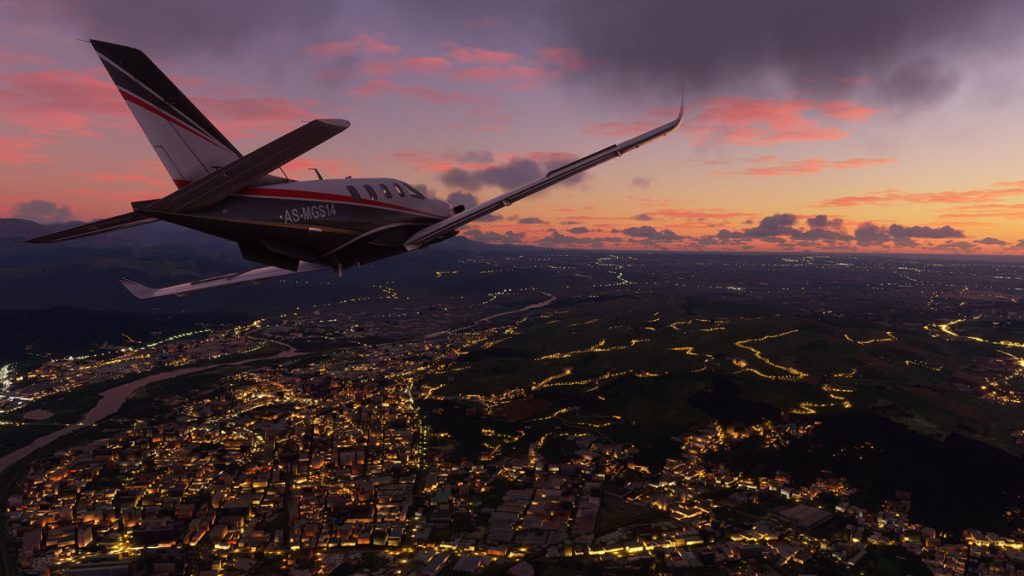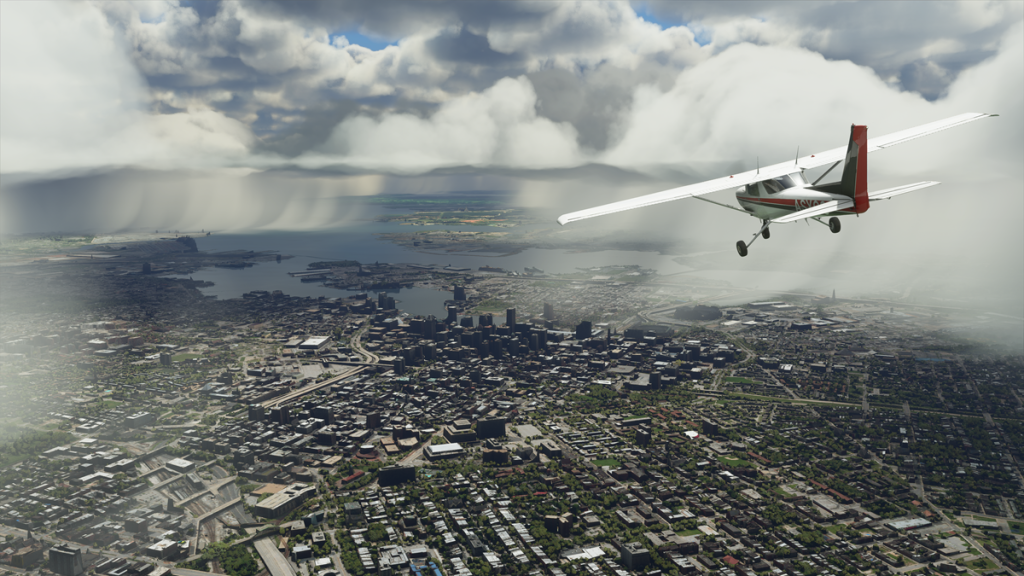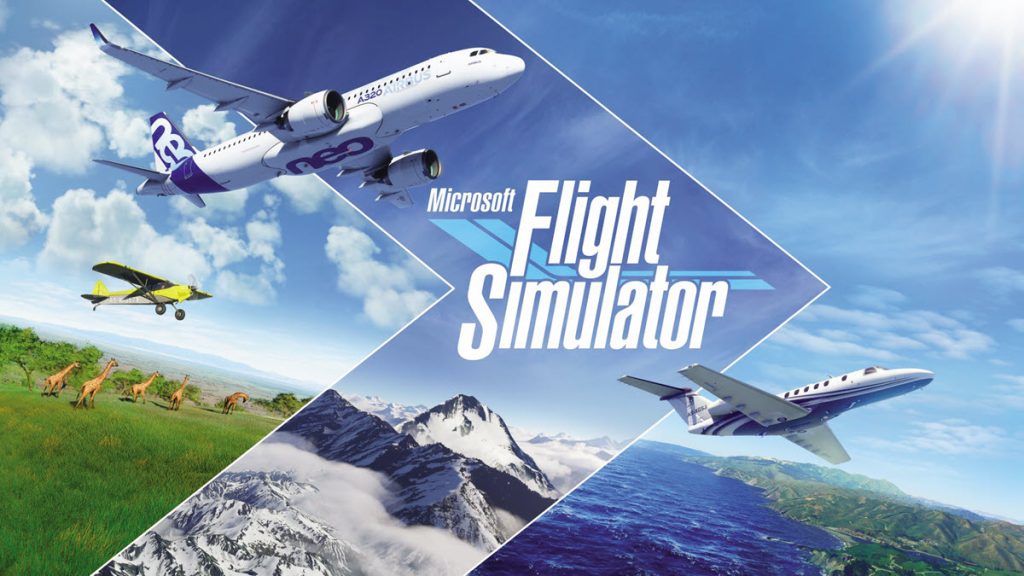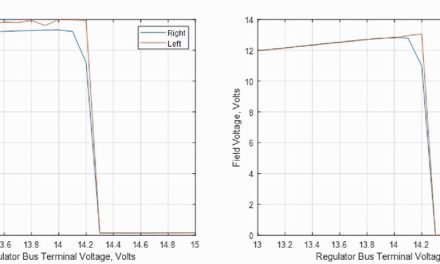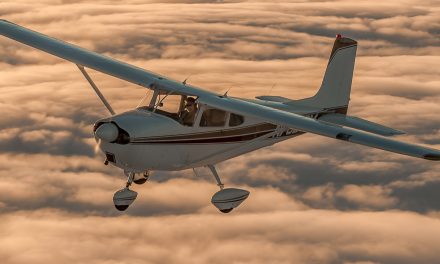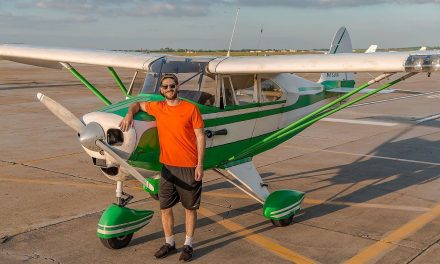Simulators Are Not Only Fun, They’re Also a Practical Way to Practice
Sometimes work and the family schedule don’t allow me (and many other pilots) to fly every day. Some days, it might be the weather that keeps me grounded, and sometimes it’s the budget that clips my wings.
In my case, food and clothing for the family always takes precedence over flying. But, whatever the reason, that typically only means “clipping the wings.” If you’ve watched a bird with their wings clipped, many of them can still fly very short distances. So can I, just not in a real aircraft. It might not give me that roller-coaster ride that I desire, and it won’t offer the g-force craving or the ear-popping altitude, but flying is flying!
Flying on the Cheap, at Home
What allows us to fly while we are at home or while we are at work? How can we practice in a hotel room? And can you do this even if you aren’t a licensed pilot?
If you are just learning to fly, practicing for your lessons couldn’t be easier. I’m not endorsing inhaling some weird hand-rolled smoke, or popping some unusual pills to become “airborne,” and I’m not talking about the Tom Petty song line “I’m learning to fly, but I ain’t got wings,” though I suppose you could fly while smoking a nice Camacho Corojo cigar.
I’m recommending loading up the computer or Xbox and activating a popular flight simulator program to buzz through the skies. Sometimes, it is the only way to fly!
Simulator or Stimulator
I’ve always felt that flying was very stimulating. I think most pilots feel the same way. It brings out another side of the personality that a pilot craves.
And one way to fulfill that desire is to use a PC simulator. One of the simulator programs that I have had for years is Microsoft Flight Simulator Professional. This version offers me a chance to download weather from the Internet and overlay it in the simulation I’m in. Another neat thing is that I can use the simulator program to pick a city and plan a cross-country flight before I make the actual flight.
And many times, the airport in the simulation has many of the actual topographical features of the real thing, to give me a perspective of the area. No, it is not the same as being there, but I’m not there, I’m pretending to be there. And that makes it fun. I can pretend to be almost anywhere, and I can fly aircraft I don’t own or can’t fly in real life. My desire has never been to fly an airline, but I can, on the simulator.
I can also make the flight, shoot a couple of approaches, and prepare for the trip, even though I’m not even instrument rated. It’s a rehearsal for the actual flight. And the old line “practice makes perfect” has never been more accurate than in aviation. The more you fly, the better you fly.
Choosing Your Options
One of my dream aircraft is the Cessna Caravan on amphibious floats. I have always felt that a Caravan on amphibs could replace a fifth-wheel travel trailer, a testosterone-filled truck, and an airplane. It could be a flying motor home, although I don’t foresee owning one in the near future. Now that I think about it, I don’t foresee being able to own one in the distant future, either.
So I’ll be stuck flying the Microsoft version, which really isn’t too bad. I am able to fly to a lake, land, and see the waves splash around the floats while I taxi to the dock. And when it comes time to refuel, I shut the program off and don’t have to worry about paying for the hundreds of gallons of fuel that I burned during the flight. My Discover card thanked me.
One nice feature I like is the ability to get a little experience with the basic ATC comments. No, it’s not like actually talking to ATC, but if I was a new pilot, or in need of practice, it sure is nice to have a voice offering me ATC directions. It just gives you an opportunity to get comfortable listening to the terminology and the basic process. I realize it’s programmed, but it is still fun and helpful.
With a good quality joystick, I can move the buttons and look around the cockpit from the pilot’s perspective. If that’s not enough, I can look in from the outside and watch the flaps and controls move on the aircraft. If you’ve never been able to fly in some sort of formation, you don’t know what you’re missing. Watching another aircraft’s controls can be very interesting. Although this is not the same as actual formation flying, it sure is less nerve-racking.
I can also go to the Internet and download custom-built aircraft profiles, including aerobatic aircraft and other designs that offer me a chance to fly an aircraft that I can’t in real life. It might be the only such plane on the planet, but I could be in its cockpit — a one-of-a-kind turbine, amphibian, aerobatic biplane, tri-gear, sport — you get the idea!
Flying a Corsair Over the South Pacific
I was watching a show that discussed being a military pilot flying from an aircraft carrier. The discussion was about the difficulty of landing on the carrier in the dark, on the rolling seas, in a high-performance combat jet. No problem, I told my son (who hasn’t had a big interest in real aviation). I explained that I made my first “carrier” landing in a snow-filled farm field with a 172! I was able to touch down and be at a complete stop in less than 50 feet.
In fact, it took full power to get the plane moving again (aren’t the 172s great aircraft? From pavement to hay fields, they can fly anywhere). And the departure from that field is another story!
But to prove my point, I loaded one of the other flight simulator games we have, Microsoft Combat Flight Simulator 3: Battle for Europe. It’s a bit old and somewhat cartoonish, yet realistic. The description from the literature: “Takes you back to this historic time and place with exquisitely detailed aircraft, cockpits, and scenery. The flight dynamics of each accurately engineered aircraft capture the true experience of flying magnificent machines, from nimble Zeros to lethal workhorses like the Corsair and Hellcat. Details like moving canopies, folding wings, battle-scarred paint, spectacular damage, and last-second bailouts immerse you in a new level of realism.”
The winged steed I chose for my demonstration flight was the “workhorse Corsair.” I unfolded the wings, checked out the cockpit, and took off over the South Pacific to start my landing approach. I have a full motion joystick so that I can get the feel of the terrain (and the impact if that ever happens). The vibrations add a sense of realism to the simulator and add to the stimulation that I, as a pilot, require. Just to give my son a little example of my talent with a tailwheel aircraft, we started with a daylight landing. I wanted him to see skill and perfection in action, not hidden by the black of a moonless night.
Well, to make the long story short, I was able to fly the Corsair better than any airshow pilot I know. Loops, rolls, and inverted flight. Years of radio-controlled model aircraft experience didn’t go to waste on me.
Was he impressed? I should say! He remarked numerous times about my skill. Not once in the history of the game had he seen a Corsair run off the end of the ship, slide off the side of the deck, or impact below the landing area into the hull of the carrier like I was able to.
I was happy that I was able to thrill my whole family with the landing techniques that would make the “flying farmer” routine in a Cub look like a beginner’s act. I’ve been over (and under) the ship’s control tower. I’ve landed without the cable and helped the deck hands practice all of their emergency procedures.
Did I have fun? You bet. I think I wrecked a few million dollars’ worth of aircraft in a matter of minutes, not counting the cost of repairs to the aircraft carrier! But I really don’t care. I was doing something that I will probably never do in my flying career. And while it might not be the same as the real thing, it was a great way to experience the world of aviation. If I was just learning or thinking about becoming a pilot, I’d be flying every evening on the simulator.
Can It Count as Time?
No, I can’t log the time, but many people don’t log all their hours anyway. I have numerous customers that say they only log the currency and FAR requirement flights.
FYI, if time isn’t in the logbooks, it doesn’t exist when it comes to the insurance companies. You can have 10,000 hours of flight time, but if you only logged 500 hours, the insurance rates are based on 500 hours. If you told the company 10,000 hours and the logs say 500 hours, good luck getting a claim paid. So always keep track of your flying time.
Don’t get me wrong, there are simulators that you can log in your logbook. Big training companies like Flight Safety are proof of that. But for the average owner, it’s probably not going to be loggable hours.
On a side note, there is a lot of optional equipment for simulators. You can get side sticks, yokes, full digital panels, rudder pedals, and more. And incidentally, if you really want to be logbook-
savvy, you should probably log every time you make an “official” flight in the simulator program. No, not in your regular logbook, but in a simulator logbook. It’s a nice way to keep track of things you have worked on. And by official, I mean the flights that require a flight from point A to B with landings, weather, and communications practice. I even have a Field Notes Pocket Logbook for my drone flights.
Simulator Program Advice
Looking for a flight simulator program? There are a lot of them out there. If you are thinking about using a simulator, here are a few thoughts, which especially apply to the Microsoft simulator with which I’m familiar.
- PC version or Xbox? I don’t have an Xbox, so I opted for the PC version. Plus, the PC version lets me take it on the road in a laptop. If your kids have an Xbox, use that if they’ll let you. And with the newer versions, you can possibly use it on both. My son says that you might be able to access them from the Xbox Game Pass or buy it on Steam, if you know what those are (and if you don’t, you probably don’t need to learn).
- Start with the computer you have and see how well it works. You’ll need a decent graphics card to get the most from it. If you don’t have a PC, you can get flight simulators for the iPad. My problem with a tablet is the size, but it can work. If your computer can’t handle the game very well, you might need a new one (or a new-to-you one).
- Does size matter? Yes, you can use a laptop while on the road, but it’s not as much fun as a big monitor or TV, or three to four monitors. I have a friend who has four monitors and the complete cockpit setup. If you see a selfie from him, it looks like he is in the cockpit of the aircraft.
- Keyboard or mouse? Do you fly your aircraft with a keyboard? Only somewhat kidding. Yes, you can operate without a joystick or complete system. But the most fun for me comes with a complete aircraft setup. There are all kinds of systems available with yokes, side sticks, quadrants, and more. I use an old WingMan Strike Force 3D Joystick from Logitech, which vibrates as I taxi on grass and lets me feel the impact of my crashes on the carrier deck. It takes me back to my RC model days, without the financial pain.
- Should you buy a simulator program? Depends on if you have the time to use it. The only value comes with use, just like a real aircraft.
As I always say, you need to fly. This is just one more way to keep your senses sharp.

